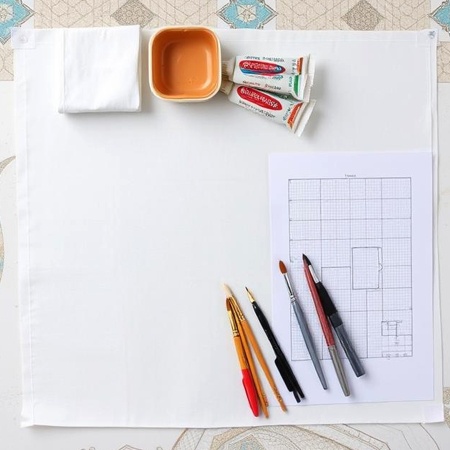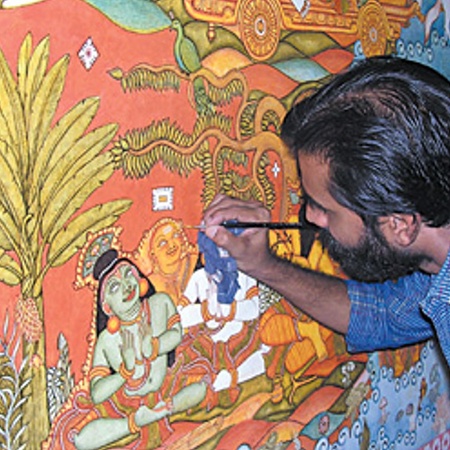India's mural traditions are as diverse as its people. Each region has its own distinct style, rooted in culture, beliefs and local materials. Here's a closer look at a few of the most recognised ones.
Kerala Murals
Kerala murals mostly revolve around Hindu mythology. You'll often find depictions of Krishna, Shiva, Saraswati and other deities. These artworks are known for their bright colours, detailed patterns and symbolic elements. They're usually seen on temple walls -
Padmanabhaswamy Temple in Thiruvananthapuram and
Mattancherry Palace in Kochi are prime examples.
Thanjavur (Tanjore) Paintings
These paintings began in Tamil Nadu during the rule of the
Nayakas and
Marathas. They stand out for their bold use of colour, heavy religious themes and the use of real gold foil. The style gives a rich, three-dimensional look, often showing gods and goddesses framed in decorative arches.
Kaavi Art (Goa and Karnataka)
Kaavi is different - it's etched, not painted. Artists use a red background made from laterite soil and scratch out designs with precision. Common motifs include geometric shapes,
flowers and mythological figures. The technique is simple but striking, mostly found in temples along the western coast.
Saura Paintings (Odisha)
Created by the Saura tribe in Odisha, these paintings reflect everyday life, rituals and tribal deities. They feature basic human and animal forms arranged in neat patterns. Though minimal in design, each artwork carries cultural meaning and spiritual value.
























 CONTACT USWaves Institute of Fashion Designing,
CONTACT USWaves Institute of Fashion Designing,